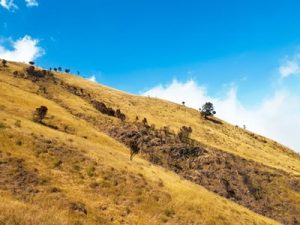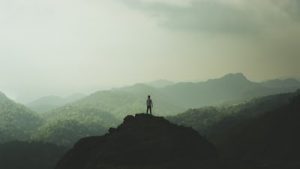We live in a vast universe. We’re part of a complex fabric of many forms of life. Our mistake has been in thinking and behaving as if we are separate from that weave. By compartmentalizing, we forget the interconnectedness of all. As we look out on the world from this disconnected human-centric point of view, our vision is therefore severely limited —there’s a whole relational field we’ve cut ourselves off from.
Think of this worldview, or dominant paradigm, as a square, closed room. We’ve been it for so long, and we’re so used to it, that it’s easy to believe that’s all there is.
I invite you: let’s open up the box. Imagine the walls dissolve. Imagine we—all the occupants of this square, closed room—now find ourselves instead in a field. It’s not a flat field at all, but rises rather steeply to a summit behind us, glowing in the late afternoon sun. We’re in the hollow at the bottom, chilly in shadow, the whole crowd of us bunched together, confined by the topography. What should we do?

Someone would suggest we move up, into the sun, onto the top, and we’d all agree, and make our way to the higher ground. It’s accessible to all. Everyone, no matter their mobility challenges, can come too.
From the top, there’s a great view. We can see that the mound we’re on is surrounded by a river, with slopes rising also on the other side—one is rocky shale; another is forested. Beyond are more peaks and valleys. Now we know where we are. But it’s still crowded on this small summit—not much room to do anything other than stand and look.
At this point, we want to spread out. Some choose to go down into the forested area and build a cabin. Some people choose to go to the riverbank; some to the lowlands of the meadow. All of us but one disperses into the landscape, finding the individual place of preference, each person doing what it is they want to do. As a safety measure, one agrees to stay on the peak as a lookout, a sort of anchor for the community.
